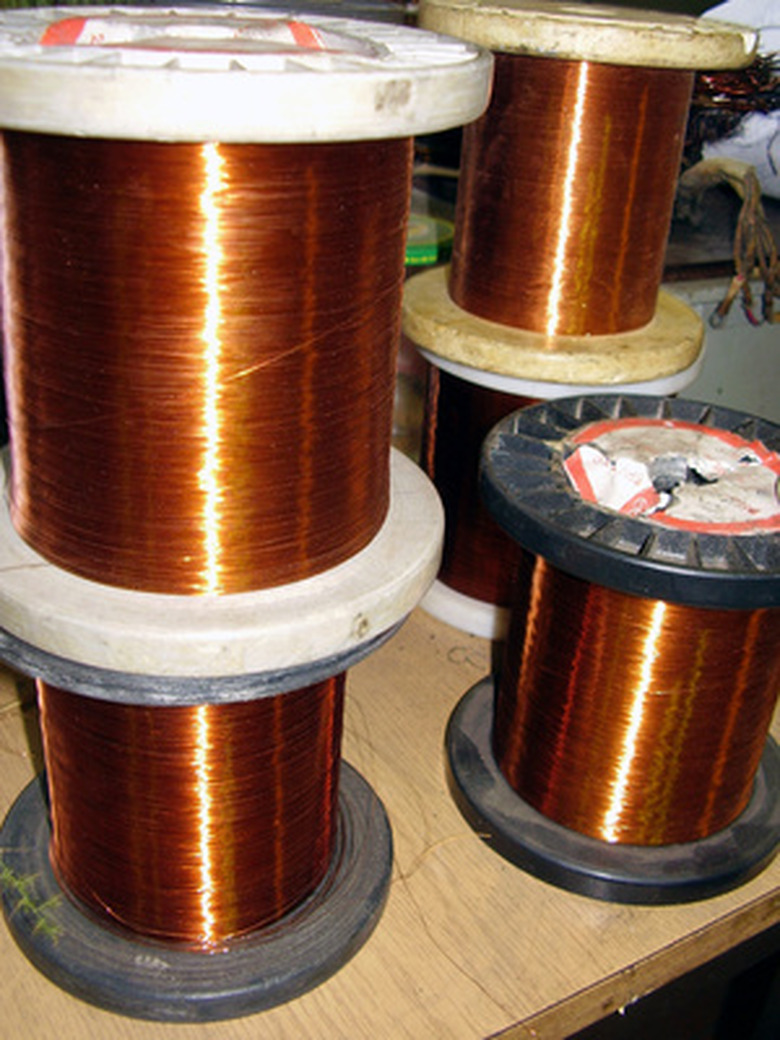How Are Magnets & Electricity Related?
Magnetism and electricity are two of the more mysterious phenomena of the everyday world. Electricity is the movement of submicroscopic charged particles through a material. This flow of charges, or "current," moving through the wires of a house provides the electrical energy needed by modern tools and appliances. Magnetism is an invisible force that allows magnets to move other magnets and certain metals at a distance. Though seemingly very different things, magnetism and electricity are in fact very closely related.
Electricity Creates Magnetism
Electricity Creates Magnetism
In 1820, the Danish physicist Hans Christian Orsted noticed something unusual while conducting experiments with electricity. He found that when an electric current was flowing in a wire, the needle of a compass placed nearby would move. The only thing that could do that was a magnetic field. Orsted had discovered that an electric current generates a magnetic field.
Magnetism Creates Electricity
Magnetism Creates Electricity
Michael Faraday, upon hearing of Orsted's discovery, believed that if electric currents could create magnetic fields then magnetic fields should be able to generate electric currents. In 1831, while carrying out a series of experiments designed to test his idea, Faraday discovered that a magnet moving near a wire could cause an electric current to flow in that wire.
The Principle of Electromagnetic Induction
The Principle of Electromagnetic Induction
It was not even necessary for the magnet to move to generate power. The important factor was that the magnetic field around the wire should be changing. This change can be caused by a moving magnet, or by holding the magnet still and moving the coil, or by increasing and decreasing the power in an electromagnet. This principle, that a changing magnetic field will induce an electric current in a conductor, came to be known as the law of electromagnetic induction.
Natural Electricity Makes Natural Magnets
Natural Electricity Makes Natural Magnets
Orsted's discovery shows why magnets have magnetic fields that can move other objects. All matter is made up out of atoms. Charged electrons orbit a dense atomic nucleus. All that a current is is a moving electric charge. That means every atom in nature is surrounded by a tiny electric current, which means all atoms have a tiny magnetic field, for as Orsted showed, electric currents generate magnetic fields. In most materials, these tiny atomic magnets point in every direction, and cancel out each other's effects. This is why most materials aren't magnetic. But in some materials these tiny magnets line up, creating a powerful magnetic field. These materials are magnets, and are almost always metal of some kind.
The Connection
The Connection
As Orsted and Faraday showed, magnetism and electricity are very closely interrelated. Each seems to be able to create the other. Even natural magnets are magnetic because of all the tiny electric currents running through them in just the right way. It would not be wrong to say that magnetism and electricity are two different aspects of the same phenomenon.
Cite This Article
MLA
Thompson, Jason. "How Are Magnets & Electricity Related?" sciencing.com, https://www.sciencing.com/magnets-electricity-related-6368626/. 24 April 2017.
APA
Thompson, Jason. (2017, April 24). How Are Magnets & Electricity Related?. sciencing.com. Retrieved from https://www.sciencing.com/magnets-electricity-related-6368626/
Chicago
Thompson, Jason. How Are Magnets & Electricity Related? last modified March 24, 2022. https://www.sciencing.com/magnets-electricity-related-6368626/
